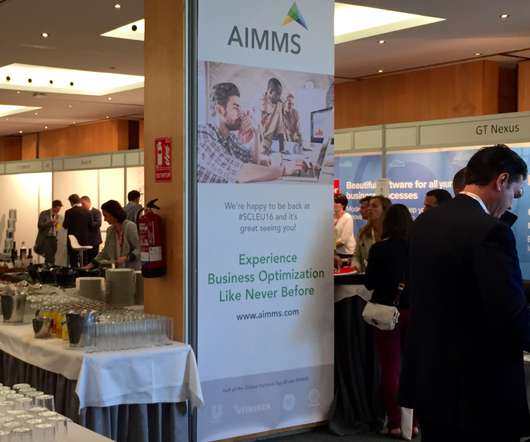How Can We Heal the Global Supply Chain?
Supply Chain Shaman
JUNE 26, 2016
Today, I unpacked my bags. In the last six months, in my travels, I have presented to supply chain teams in China, Belgium, France, Germany, Peru, Mexico, Netherlands, South Africa, Singapore, and the United Kingdom. To streamline my efforts, I just kept a packed bag in the closet. I strongly feel that if I am going to cover the global supply chain that I need to experience it.








































Let's personalize your content